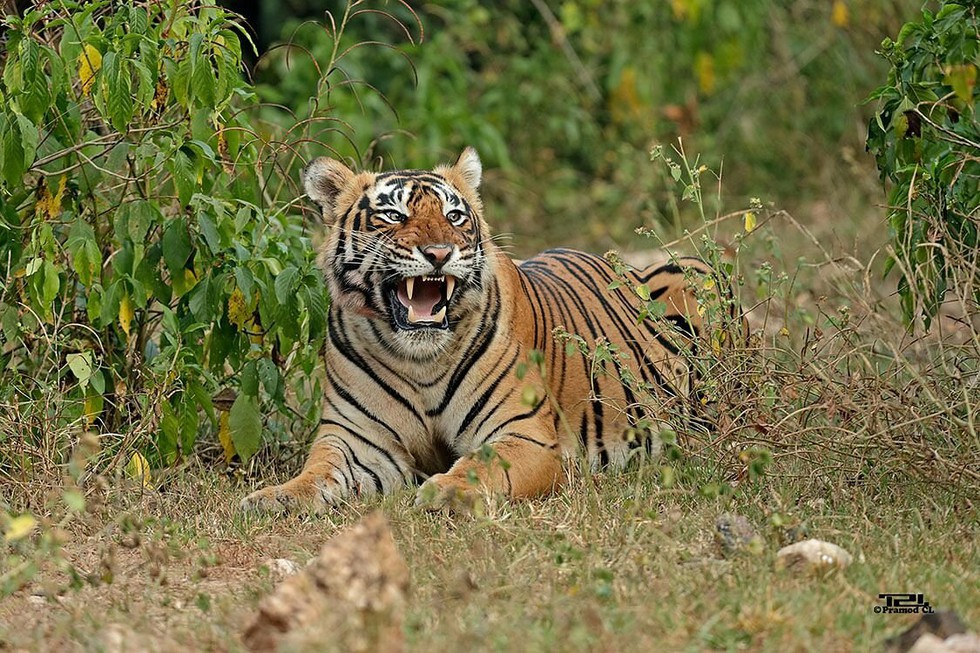The Central Empowered Committee (CEC), mandated by the Supreme Court, has highlighted significant harm to wildlife in the Sariska Tiger Reserve (STR) in Rajasthan due to unchecked tourism and traffic. The committee has recommended a ban on private vehicles traveling to the Pandupol Hanuman temple, located in the core area of the reserve.
Key Findings
- Vehicular Traffic Impact: The CEC report, dated July 22, indicates that the heavy vehicular traffic is negatively affecting tiger breeding. Tigers have largely avoided the area south of the three roads leading to the temple.
- Recommendations for Improvement:
- Deployment of a special tiger force in STR.
- Addressing issues such as staff shortages, uncontrolled cattle grazing, and village relocation.
- Potential construction of alternatives such as a ropeway, elevated road, motorable twin tunnel, or electric tramway to benefit both wildlife and pilgrims.
Tourism and Conservation Issues
- Temple Traffic: Approximately 305 identified temples in STR face challenges due to heavy traffic. The unrestricted movement of tourist vehicles to the Pandupol temple, 22 kilometers into the core area, is a major concern.
- Behavioral Changes in Wildlife: The CEC notes significant changes in animal behavior due to the high volume of visitors.
- Supreme Court’s Role: In response to the high number of devotees visiting the temple, the Supreme Court established a high-level panel in July of the previous year to find a sustainable solution. The panel suggested regulating vehicle entry and introducing electric shuttle buses.
Panel and CEC Collaboration
- Additional Expertise: The Supreme Court directed the panel and CEC to collaborate, adding SP Yadav from the International Big Cat Alliance as an expert.
- Field Observations: The report, based on field visits by CEC member Chandra Prakash Goyal and Yadav, highlighted that the current traffic levels exceed STR’s carrying capacity. On average, 630 private vehicles visit the temple on peak days, rising to 1,800 during the annual mela in August and September.
Impact on Tiger Breeding
- Avoidance of High-Traffic Areas: Tigers have been avoiding areas with high traffic, impacting breeding. There have been no tiger births near the roads used by pilgrims in the past decade.
- Violation of Rules: Random parking and temple activities contribute to forest fire hazards, pollution, and contamination of water sources essential for wildlife.
Development Concerns
Observations noted the operation and construction of hotels and resorts in the buffer area of the tiger reserve. Such projects require prior wildlife clearance.
Ecological Importance
- Forest and Water Sources: STR, located in the Aravalli mountain range, is vital for its dense forests and serves as a catchment area for the Ruparail river, which provides crucial water sources for the region.
- Biodiversity: STR is home to diverse fauna, including species listed on the IUCN Red List like the panther, chowsingha, and rusty-spotted cat.
Multiple-Choice Questions (MCQs):
- What primary issue is causing harm to wildlife in the Sariska Tiger Reserve according to the CEC report?
- A) Deforestation
- B) Unchecked tourism and traffic
- C) Poaching
- D) Illegal mining
- What is one of the recommendations made by the CEC to address the issues in Sariska Tiger Reserve?
- A) Increase the number of private vehicles allowed
- B) Construct an elevated road or electric tramway
- C) Reduce the number of wildlife rangers
- D) Allow more hotels to be built
- According to the report, how has the vehicular traffic affected tiger breeding in STR?
- A) It has improved breeding rates.
- B) Tigers have avoided high-traffic areas, negatively impacting breeding.
- C) Traffic has no effect on tiger breeding.
- D) Breeding rates have increased due to higher tourist numbers.
- How many private vehicles, on average, visit the Pandupol temple on peak days?
- A) 100
- B) 300
- C) 630
- D) 1,800
- What has been noted about the construction of hotels and resorts in the buffer area of STR?
- A) It is in compliance with wildlife clearance rules.
- B) Many are operating and more are under construction without proper clearance.
- C) No new construction has been observed.
- D) All construction projects have been halted.
